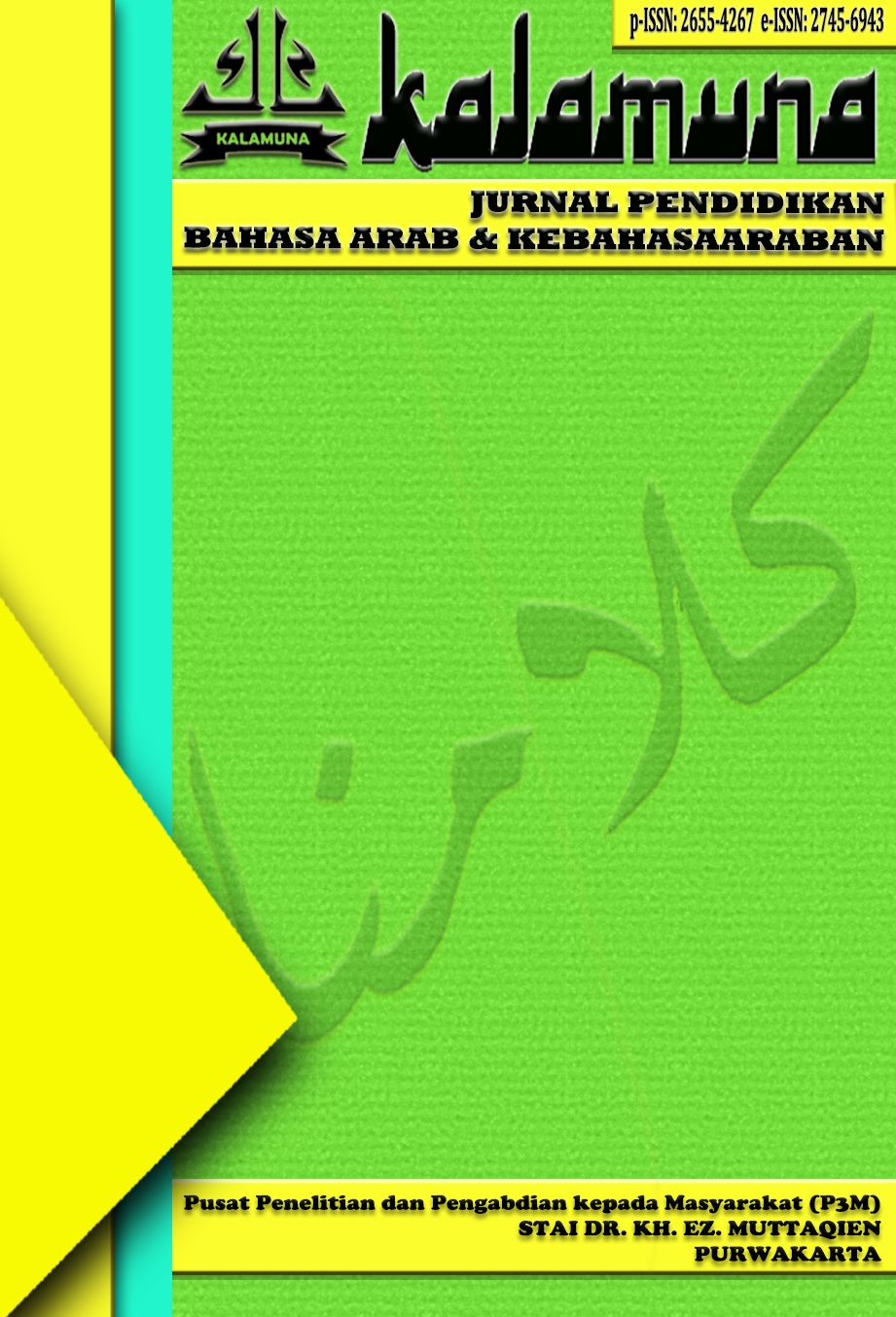An Analysis of the Use of Generative Technologies in Developing Arabic Reading Skill Materials
Keywords:
Generative Technologies, Arabic Language Education Content, Content AnalysisAbstract
Generative technologies, also known as generative artificial intelligence (AI), possess significant potential to revolutionize Arabic language educational content. AI can be used to create a more personalized, engaging, and effective learning experience, enabling students to achieve their goals. The approach used in this research is a qualitative approach (Library Research), in which the data collection technique employed is documentation, utilizing content analysis as the method of analysis using a desk study design to analyze the impact of using generative technologies (generative AI) in developing Arabic language education content. Data was collected from various reliable sources, such as scientific journals, research articles, textbooks, and official reports. Generative AI is a branch of artificial intelligence capable of producing new content, such as text, images, and audio. Generative AI has significant potential to improve the quality and accessibility of education. Generative AI has several advantages compared to traditional methods of producing educational content. Generative AI can produce customized content based on individual student needs. This research explores the use of generative AI to create creative and engaging Arabic language education content. This research found that generative AI can be used to produce different types of Arabic language education content, such as texts, stories, dialogues, and practice questions. The educational content produced by generative AI has proven to enhance student motivation and learning outcomes.
References
DAFTAR PUSTAKA
Abilowo, K., Santoni, M. M., & Muliawati, A. (2020). Perancangan Chatbot Sebagai Pembelajaran Dasar Bahasa Jawa Menggunakan Artificial Intelligence Markup Language. Informatik : Jurnal Ilmu Komputer, 16(3). https://doi.org/10.52958/iftk.v16i3.2010
Ari Suryawati Secio Chaesar, Andayani, Suyitno, & Arif Setyawan. (2023). Empowering Teachers with the Application of a Process Approach in Indonesian Language Learning in Surakarta City Junior High School. Dinamisia : Jurnal Pengabdian Kepada Masyarakat, 7(2). https://doi.org/10.31849/dinamisia.v7i2.11700
Bal Ram, & Pratima Verma. (2023). Artificial intelligence AI-based Chatbot study of ChatGPT, Google AI Bard and Baidu AI. World Journal of Advanced Engineering Technology and Sciences, 8(1). https://doi.org/10.30574/wjaets.2023.8.1.0045 Ball, P. (2018). Innovations and Challenges in CLIL Materials Design. Theory into Practice, 57(3). https://doi.org/10.1080/00405841.2018.1484036
Daryanto, T. H., & Khodra, M. L. (2022). Indonesian AMR-to-Text Generation by Language Model Fine-tuning. 2022 9th International Conference on Advanced Informatics: Concepts, Theory and Applications, ICAICTA 2022. https://doi.org/10.1109/ICAICTA56449.2022.9932960
Ebert, C., & Louridas, P. (2023). Generative AI for Software Practitioners. IEEE Software, 40(4). https://doi.org/10.1109/MS.2023.3265877 Fadli, M. R. (2021). Memahami desain metode penelitian kualitatif. HUMANIKA, 21(1), 33–54. https://doi.org/10.21831/hum.v21i1.38075
Grinbaum, A., & Adomaitis, L. (2024). Dual use concerns of generative AI and large language models. Journal of Responsible Innovation, 11(1). https://doi.org/10.1080/23299460.2024.2304381 Hidayat, M. R. (2022). Peningkatan kreatifitas pembelajaran Bahasa Indonesia Siswa Tingkat Dasar Melalui Project Learning Berbasis Merdeka Belajar. EUNOIA (Jurnal Pendidikan Bahasa Indonesia), 2(2). https://doi.org/10.30821/eunoia.v2i2.2069
Hoerudin, C. W. (2023). Indonesian Language Learning Using the Discovery Learning Model Based on High Order Thinking Skills (HOTS) on Students’ Analytical Thinking Ability. Munaddhomah: Jurnal Manajemen Pendidikan Islam, 4(1). https://doi.org/10.31538/munaddhomah.v4i1.370
Muhammad Fikri Ridwansyah, & Amalia Zuhra. (2022). PENGGUNAAN ARTIFICIAL INTELLIGENCE DALAM PERANG DARI ASPEK PRINSIP PEMBEDAAN. TerAs Law Review : Jurnal Hukum Humaniter Dan HAM, 4(1). Copyright @ Moh. Ahsan Shohifur Rizal https://doi.org/10.25105/teraslrev.v4i1.15054
Mukherjee, A., & Chang, H. H. (2023c). The Creative Frontier of Generative AI: Managing the Novelty-Usefulness Tradeoff. Mustafa, M. N., Hermandra, H., & Zulhafizh, Z. (2021). Strategi berinovasi guru di sekolah menengah atas. JPPI (Jurnal Penelitian Pendidikan Indonesia), 7(3). https://doi.org/10.29210/020211127
Samuelson, P. (2023). Legal Challenges to Generative AI, Part I. In Communications of the ACM (Vol. 66, Issue 7). https://doi.org/10.1145/3597151
Seo, C. (2023). Opportunities and threats of generative AI technology. The Journal of Internet Electronic Commerce Resarch, 23(2). https://doi.org/10.37272/jiecr.2023.04.23.2.59 Copyright @ Moh. Ahsan Shohifur Rizal
Suariqi Diantama. (2023). Pemanfaatan Artificial Intelegent (AI) Dalam Dunia Pendidikan. DEWANTECH Jurnal Teknologi Pendidikan, 1(1). https://doi.org/10.61434/dewantech.v1i1.8
Subowo, E., Dhiyaulhaq, N., & Wahyu, I. (2022). Pelatihan Artificial Intelligence untuk Tenaga Pendidik dan Guru Sekolah Dasar Muhammadiyah (Online Thematic Academy Kominfo RI). Jurnal Pengabdian Dharma Wacana, 3(3). https://doi.org/10.37295/jpdw.v3i3.296
Sumaryamti, S. (2023). Inovasi Pembelajaran Bahasa Indonesia Dalam Kurikulum Merdeka Belajar Untuk Mewujudkan Profil Pelajar Pancasila. Jurnal Indonesia Sosial Teknologi, 4(1), 47–55. https://doi.org/10.36418/jist.v4i1.564













